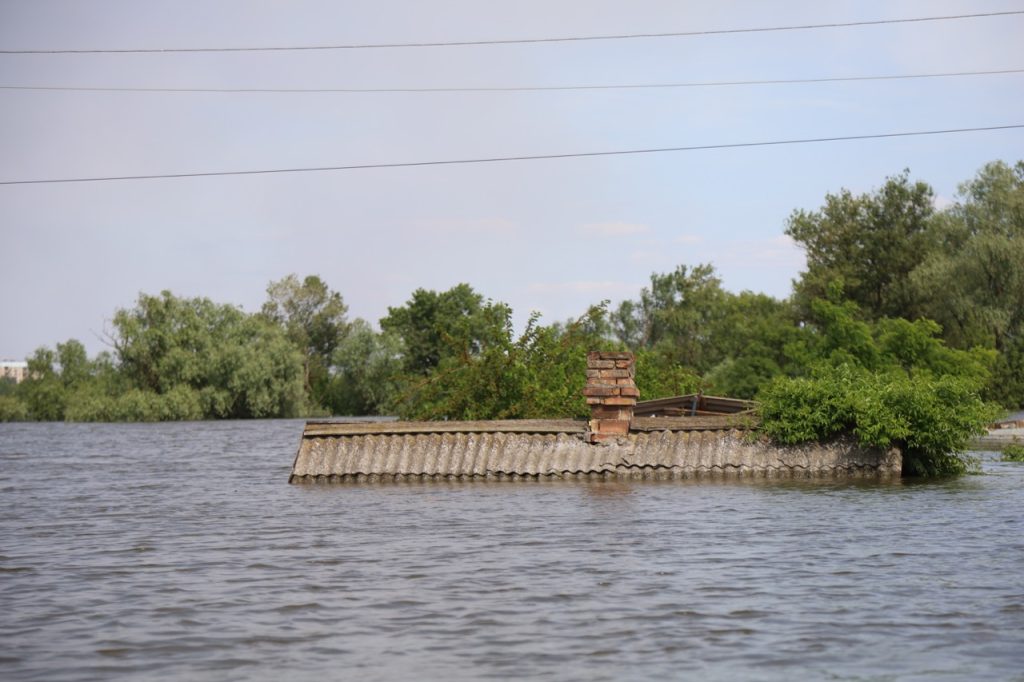“This is Vasyl, he is the main helper in our village. He saves animals and helps everyone,” Natalya Pelyushenko tells us.
Before the full-scale invasion she and Vasyl were just fellow villagers, but the great war brought them together. Vasyl and Natalya live in the village of Sadove, which used to be a part of the Bilozerskyi district, and since 2020 has joined the Kherson community.

We drove with volunteers through Antonivka, shattered by Russian artillery, to Sadove, spread out on the banks of the Inhulets River, at the point of its confluence with the Dnipro. It is currently impossible to get to the village in any other way. Journalists who tried to get there through the Berislavskyi highway were sent back by the military.
Though not completely flooded, several streets in the center of Sadove got completely covered with water.
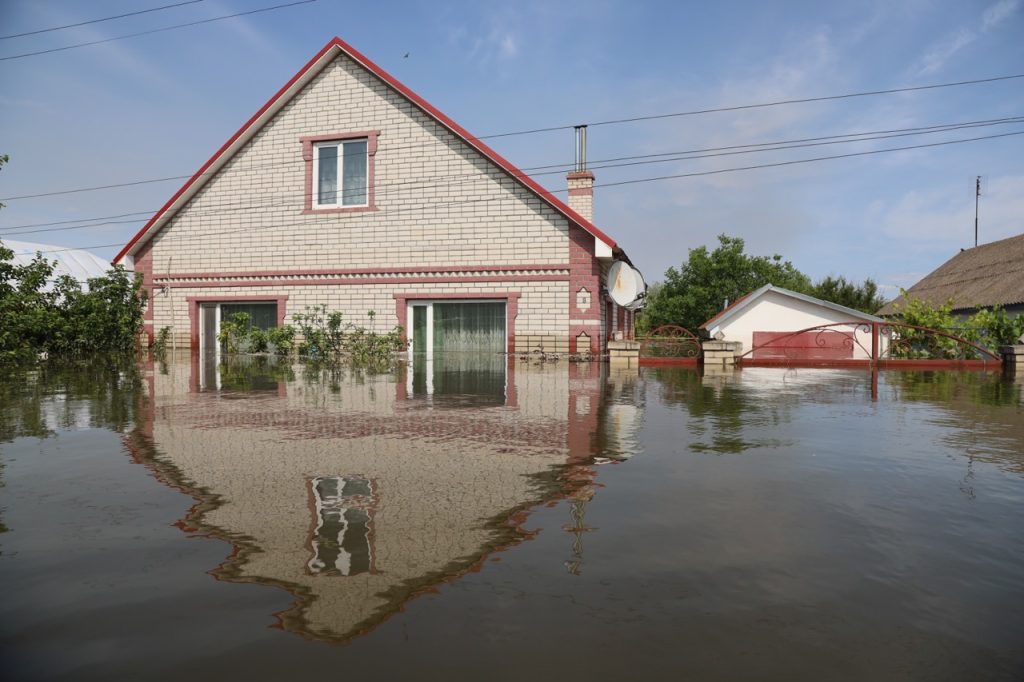
Vasyl and Natalya invite us on the boat and show us their village.
“Here is the central Kharchenko Street that was also affected and Naberezhna Street. My shop will be there now,” the woman says, while Vasyl deftly takes the boat along the street of his village.
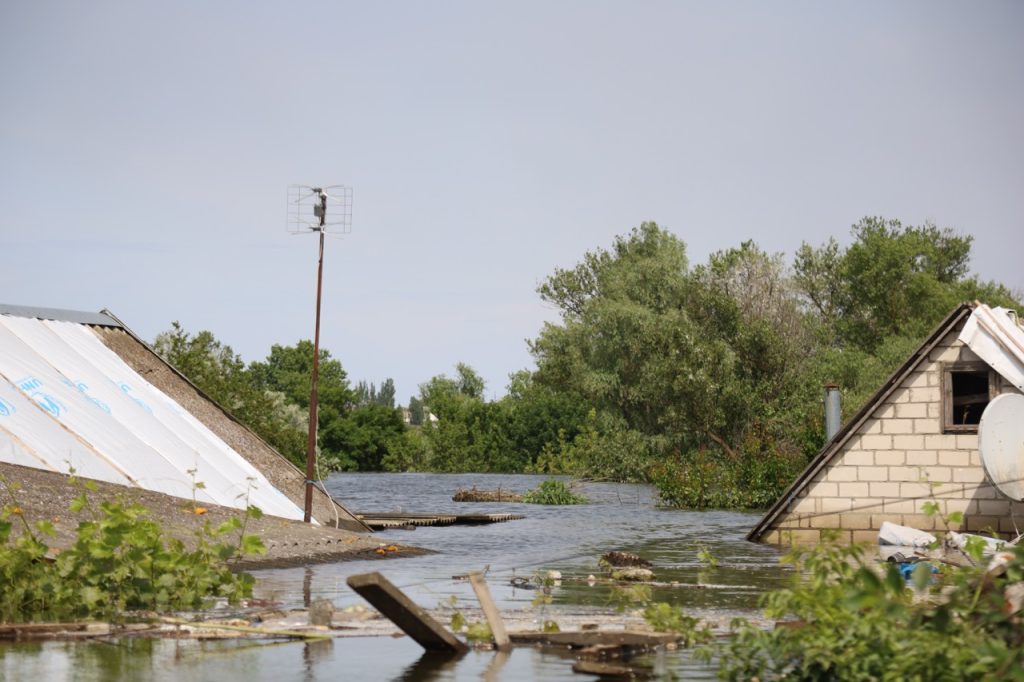
It can be seen visually that we are swimming “downhill”, that is, houses are flooded one by one more and more.
Natalya’s shop is covered to the middle of the windows with water.
“Somehow… we didn’t expect such an enormous amount of water to rush. We’ve moved some things, some not, we`ve worked and put our hearts into. We tried for the people, not for ourselves, but more for the people,” Natalya says as we swim up to her store.
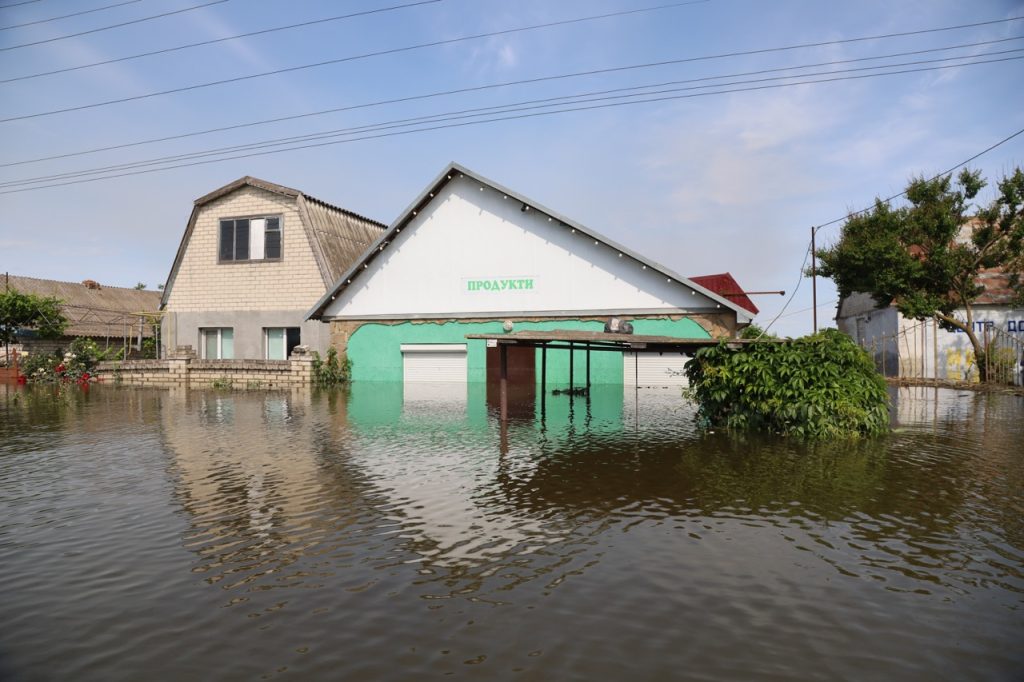
Next to the shop stands the flooded “Help Center”. People here received humanitarian aid, building materials and construction kits, because the village was shelled almost every day, and now, even in the flooded village, damage from shells and shrapnel is visible.
The shop worked for four years and was a lifelong business. Natalya says that she could have left her village in order to live in safety, but eventually decided to stay. Even now, when her business and house are covered with the waters of Inhulets, she and her mother do not leave the village.
“Here my neighbours and I had the best flower garden in the village. Everyone in the village came to our shop – people were sure to take pictures against the background of these beautiful roses and other flowers,” says the woman, pointing to the flooded homestead, in front of which beautiful flowers stick out of the water.

The owners of this house are excellent gardeners. Almost the first in the village to grow early vegetables, they had good greenhouses, which are now completely flooded.
Vasyl was also an active gardener before the flooding. This year he planted 3 gardens. When the Russian artillery hit his house and the garden, he moved to the house of friends who had left and planted a garden there. After some time, the Russian artillery destroyed both this garden and the house.
Vasyl’s third garden was flooded by water rushing for the third day from the Kakhovskaya HPP, blown up by the Russians.
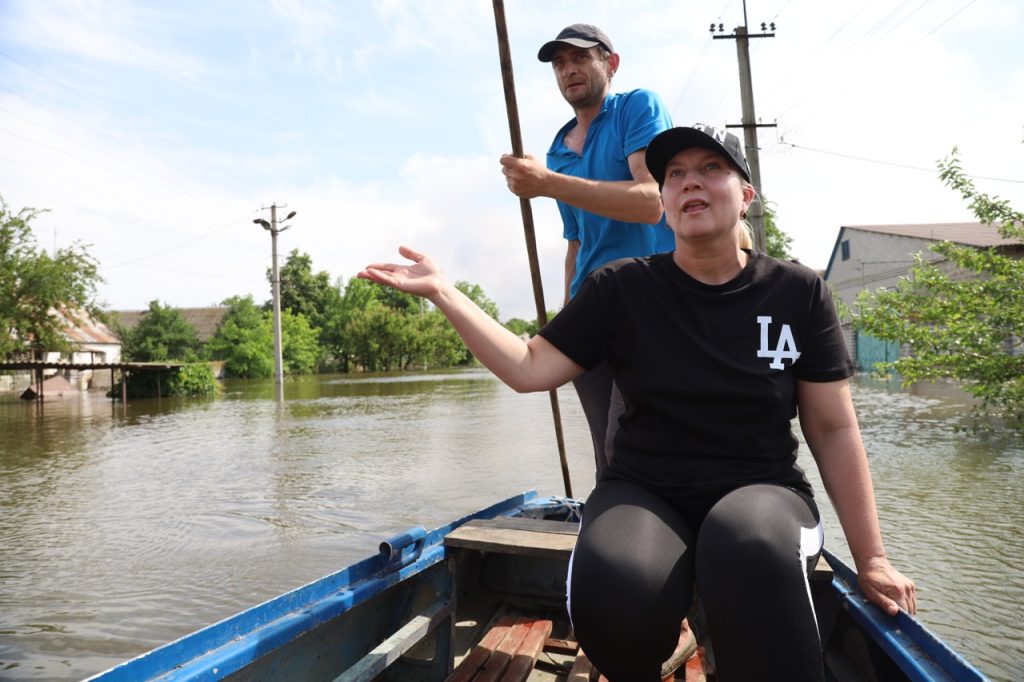
Sadove is located not on the Dnipro, but on the Inhulets, flowing into it, so the water level here rose, albeit rapidly, but a little slower than in Kherson.
The mouth of Inhulets can be now followed by the trees growing on the shore. It is possible to reach it with your hand from the houses.
We swim further along the flooded street, past ripening cherries and mulberries. I tell Natalya that last year, due to the occupation of the Kherson region, I did not get the chance to eat mulberry. She deftly swims up to the tree and treats me with delicious berries. The taste is like in childhood, but the aftertaste of grief does not leave.

The further down the street we go, the more houses are flooded. We already see those from which only the tops of the roofs and chimneys stick out.
Some of the houses collapsed because they were built of hollow brick— clay blocks that are mixed with straw and dried in the sun without burning. Brick houses stand, but for long?

Swimming under the electric wires, we automatically try not to touch them, although we already know from our guides that there has been no electricity in the village since November 6. While retreating, the Russians blew up the transformers, and then, due to constant shelling, Ukrainian energy workers were unable to repair either them or the broken wires.
“We have electricity in the village due to generators only. Even the mobile communication tower is powered by a generator. We have a person who starts it every morning, that’s how we have mobile communication here. During the day, we pour fuel there, and in the evening we turn it off. So in the evening we are left without any communication,” Natalya says.

We swim past the church, which was also flooded.
Not all of Naberezhna Street, where Natalya lived, is covered with water. Only its lower part. Houses here are flooded the most.
“I spent my entire childhood here, my whole life. It’s a place of my strength. I always said that,” says Natalya with tears in her eyes.
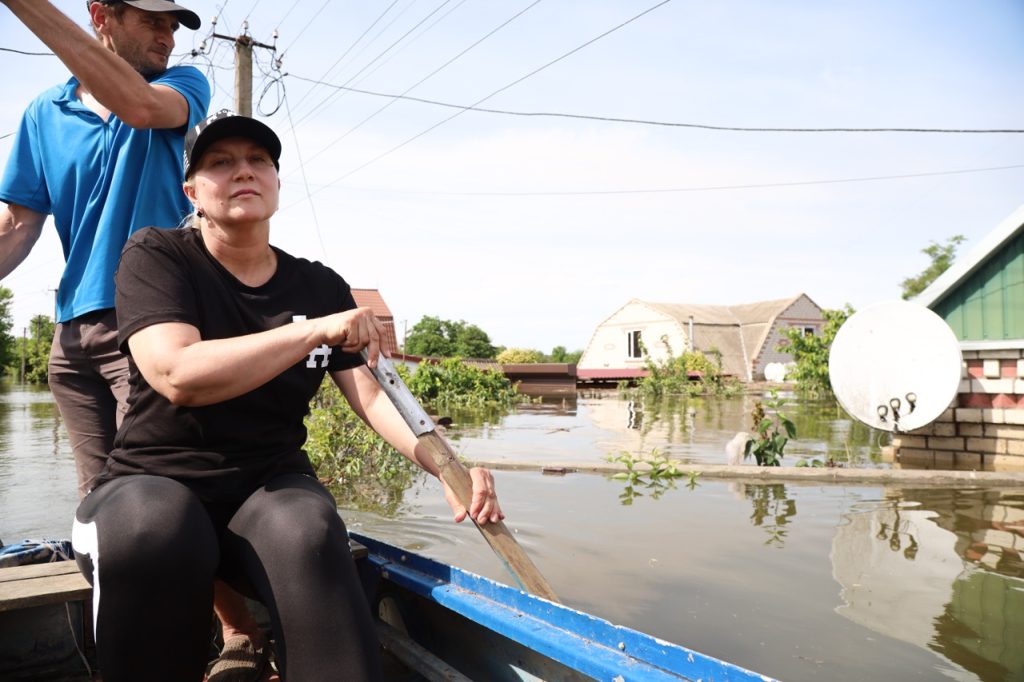
We swim through her flooded house.
“I did everything here with my own strength, it’s entirely my doing. No way I could leave it, although there was always an opportunity,” says the woman.
Natalya’s neighbour is now in the hospital — he was wounded during another round of artillery shelling of the village. There was no one to save his apiary, so beehives are now floating in the yard and on the street. The remains of bee families sit on them with no chance of survival.
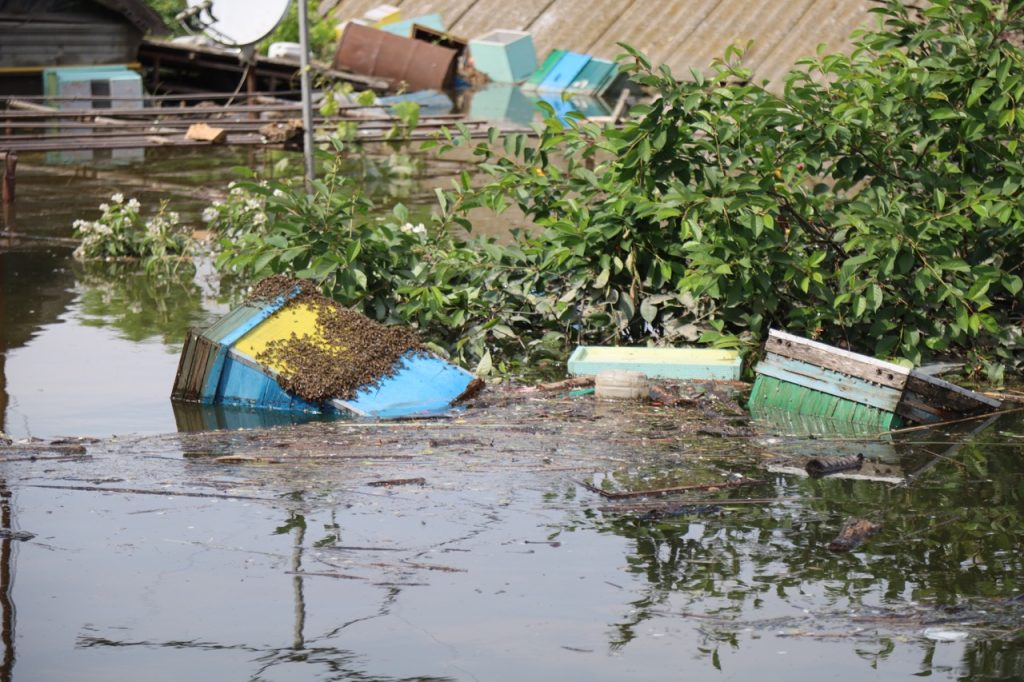
Now we are on our way back to the land. Along the way we see someone’s old car “Moskvich” floating nearby, which was pulled from the yard tens of metres from here.
And behind the village and the Dnipro we can see plumes of smoke – somewhere in the area of Kostohryzovo, forests are burning and, according to the familiar soldiers, a Russian military convoy that our soldiers covered.
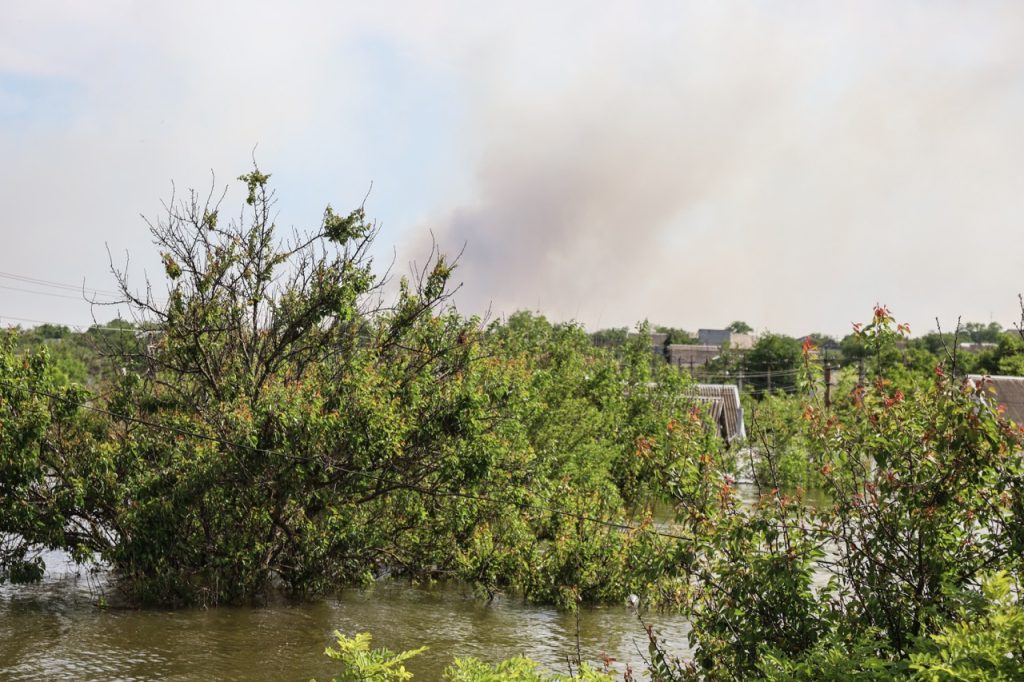
Natalya invites us to her temporary residence. She rescued a coffee machine from the shop and categorically states that she will not let us go without her special coffee.
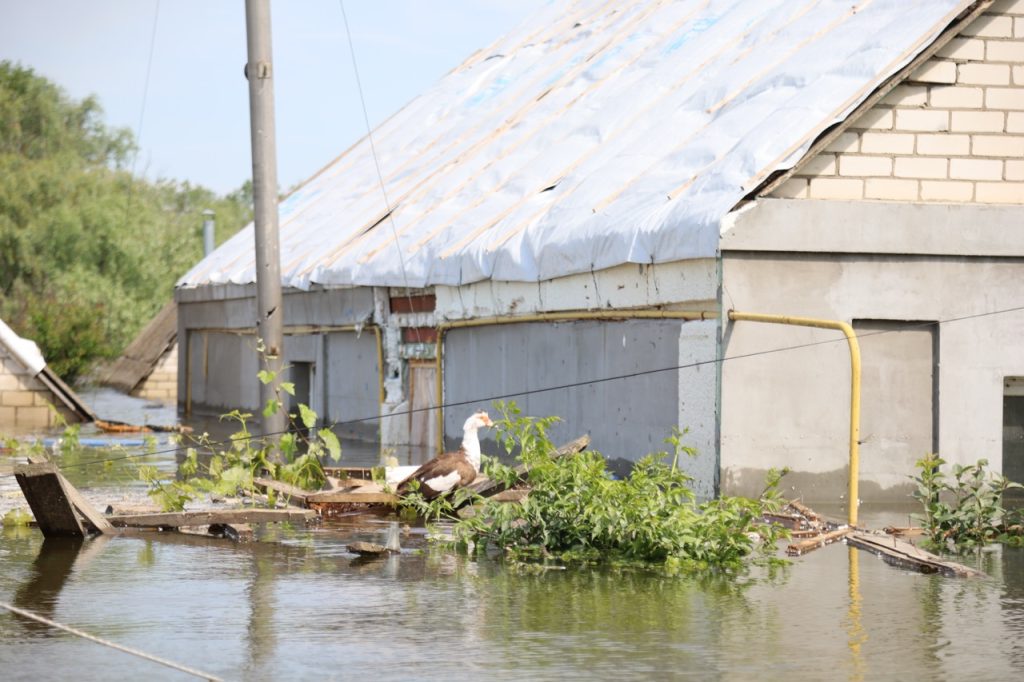

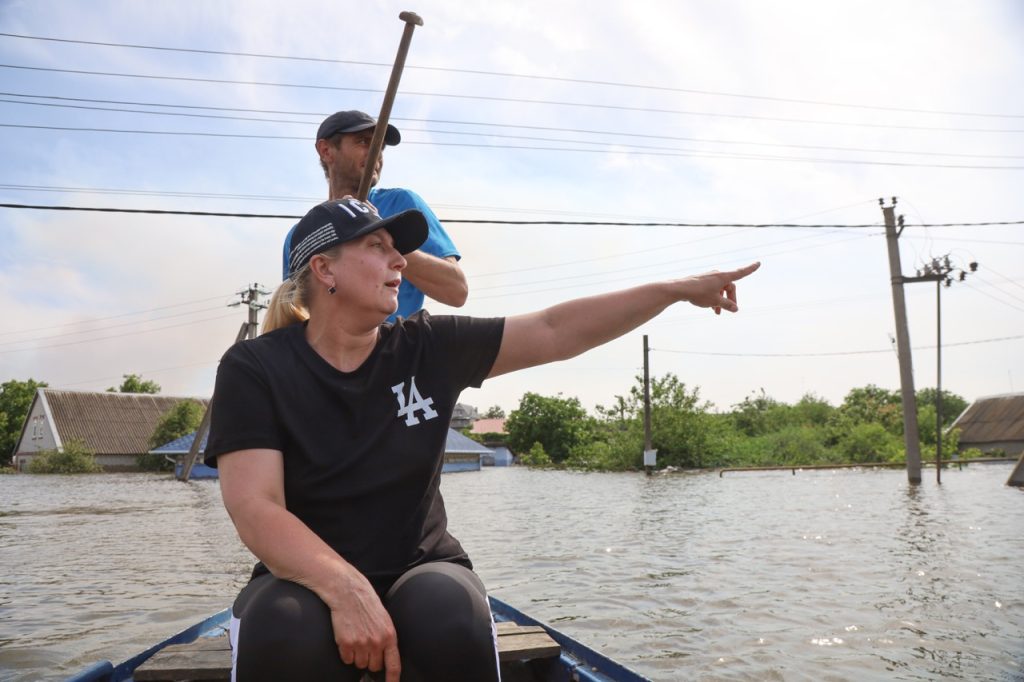
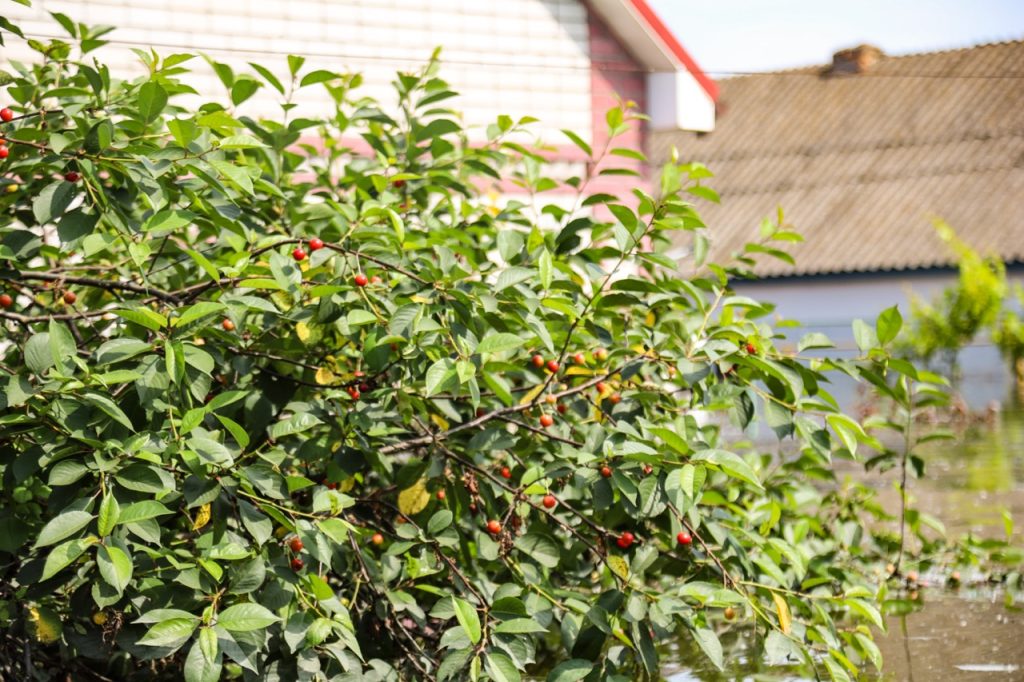
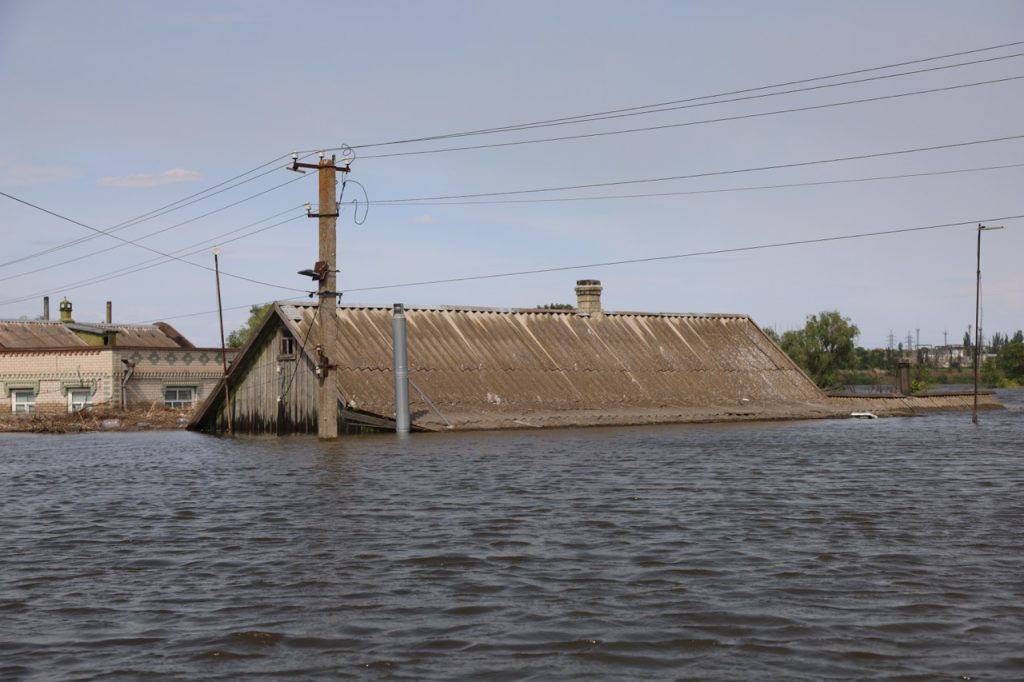
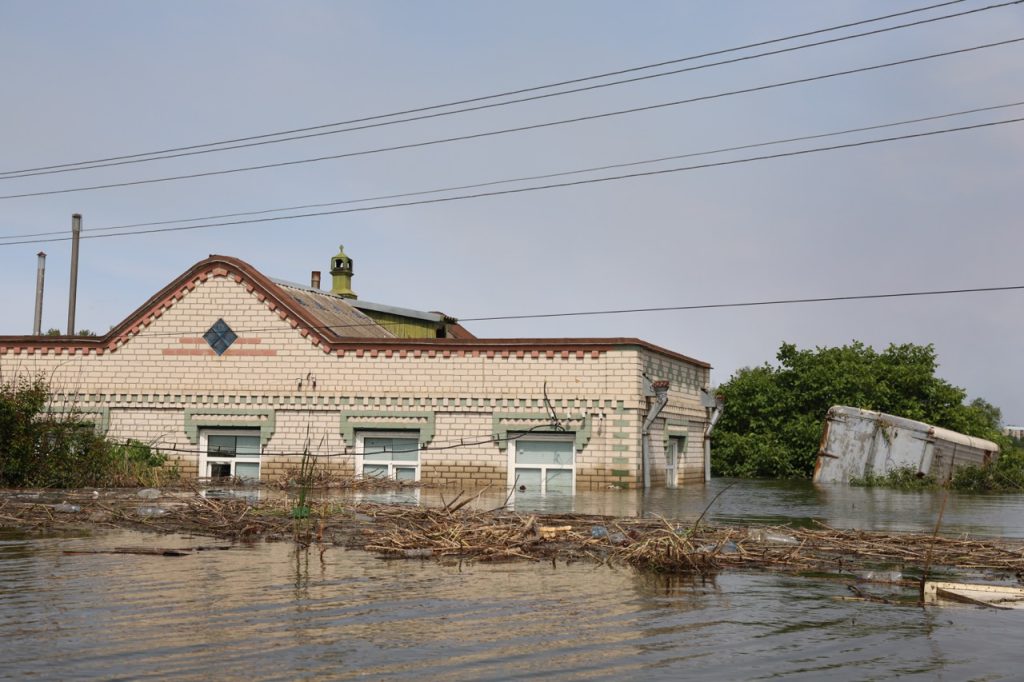


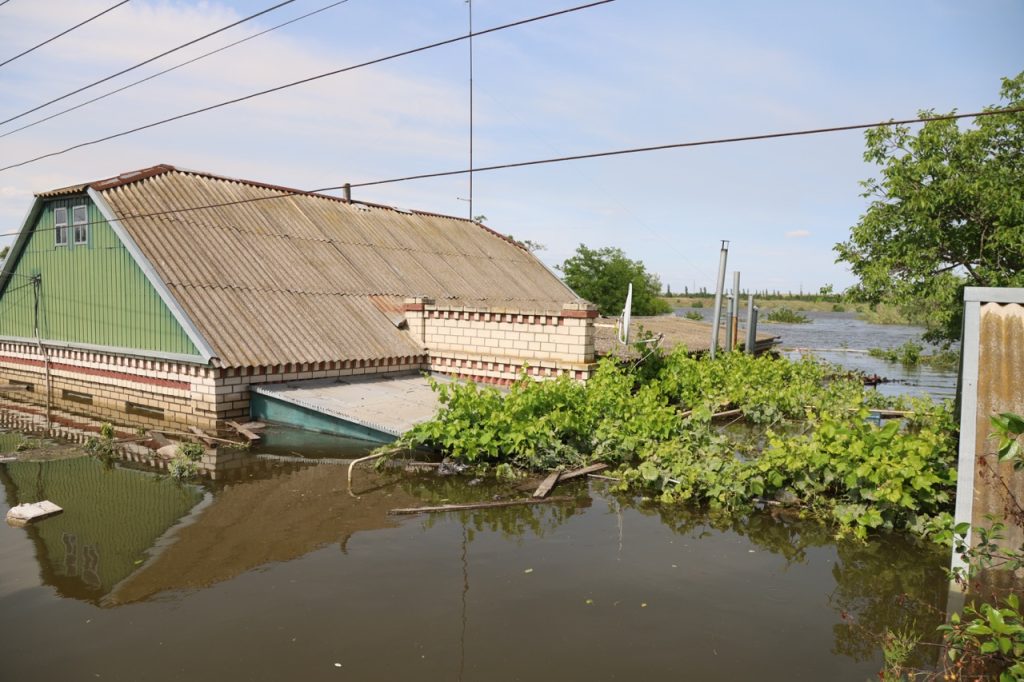

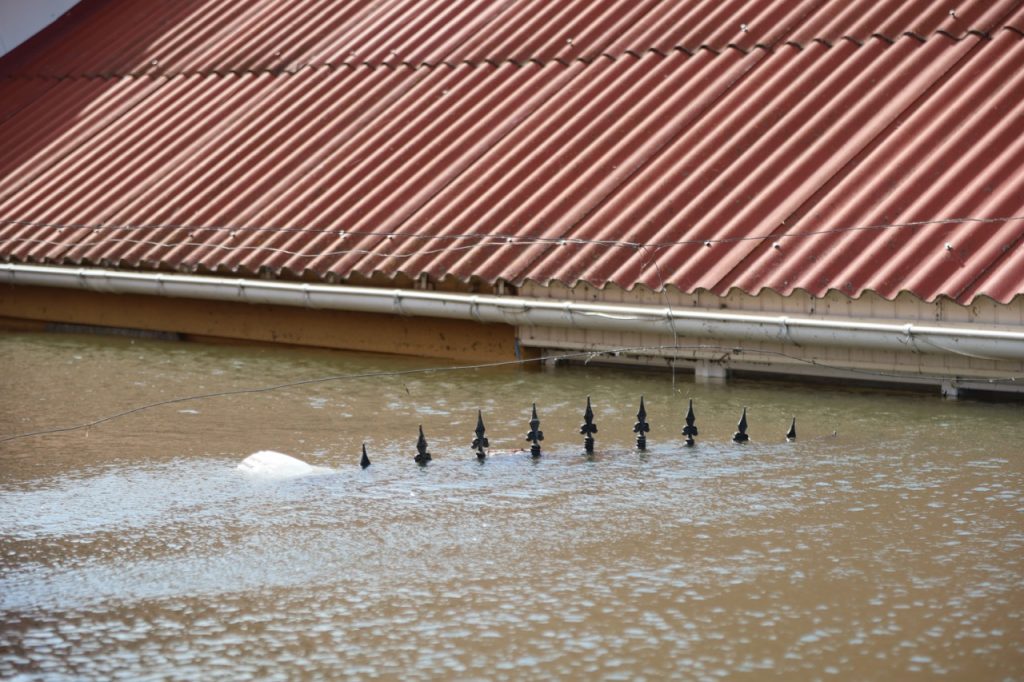

Serhii Nikitenko


